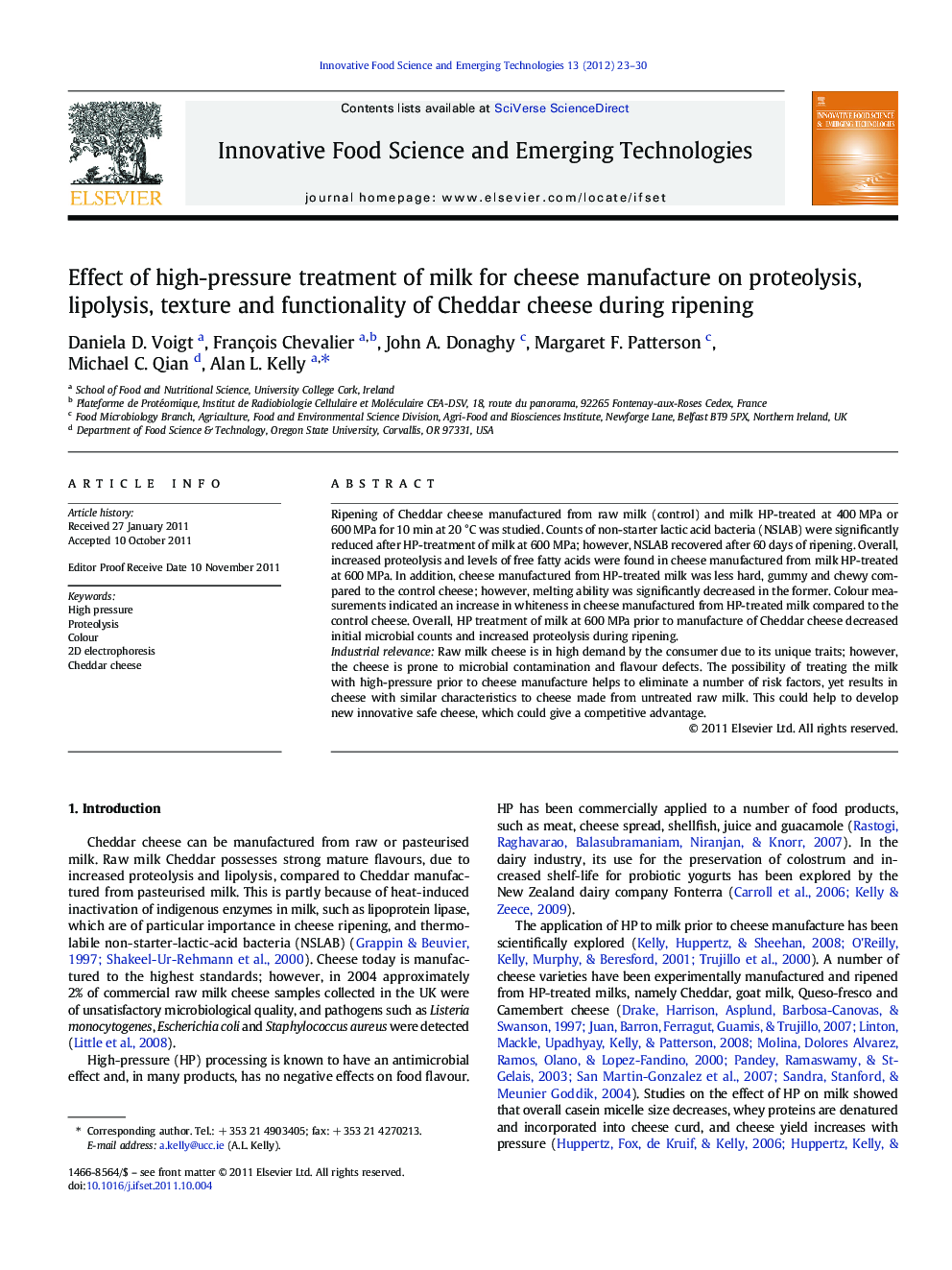| Article ID | Journal | Published Year | Pages | File Type |
|---|---|---|---|---|
| 2087267 | Innovative Food Science & Emerging Technologies | 2012 | 8 Pages |
Ripening of Cheddar cheese manufactured from raw milk (control) and milk HP-treated at 400 MPa or 600 MPa for 10 min at 20 °C was studied. Counts of non-starter lactic acid bacteria (NSLAB) were significantly reduced after HP-treatment of milk at 600 MPa; however, NSLAB recovered after 60 days of ripening. Overall, increased proteolysis and levels of free fatty acids were found in cheese manufactured from milk HP-treated at 600 MPa. In addition, cheese manufactured from HP-treated milk was less hard, gummy and chewy compared to the control cheese; however, melting ability was significantly decreased in the former. Colour measurements indicated an increase in whiteness in cheese manufactured from HP-treated milk compared to the control cheese. Overall, HP treatment of milk at 600 MPa prior to manufacture of Cheddar cheese decreased initial microbial counts and increased proteolysis during ripening.Industrial relevanceRaw milk cheese is in high demand by the consumer due to its unique traits; however, the cheese is prone to microbial contamination and flavour defects. The possibility of treating the milk with high-pressure prior to cheese manufacture helps to eliminate a number of risk factors, yet results in cheese with similar characteristics to cheese made from untreated raw milk. This could help to develop new innovative safe cheese, which could give a competitive advantage.
► HP-treatment of cheese milk increased proteolysis and levels of free fatty acids during ripening. ► Melting was reduced in cheese from HP treated milk. ► Colour was whiter in cheese from HP-treated milk. ► HP-treatment may be an innovative method to preserve food and develop new cheese products.
